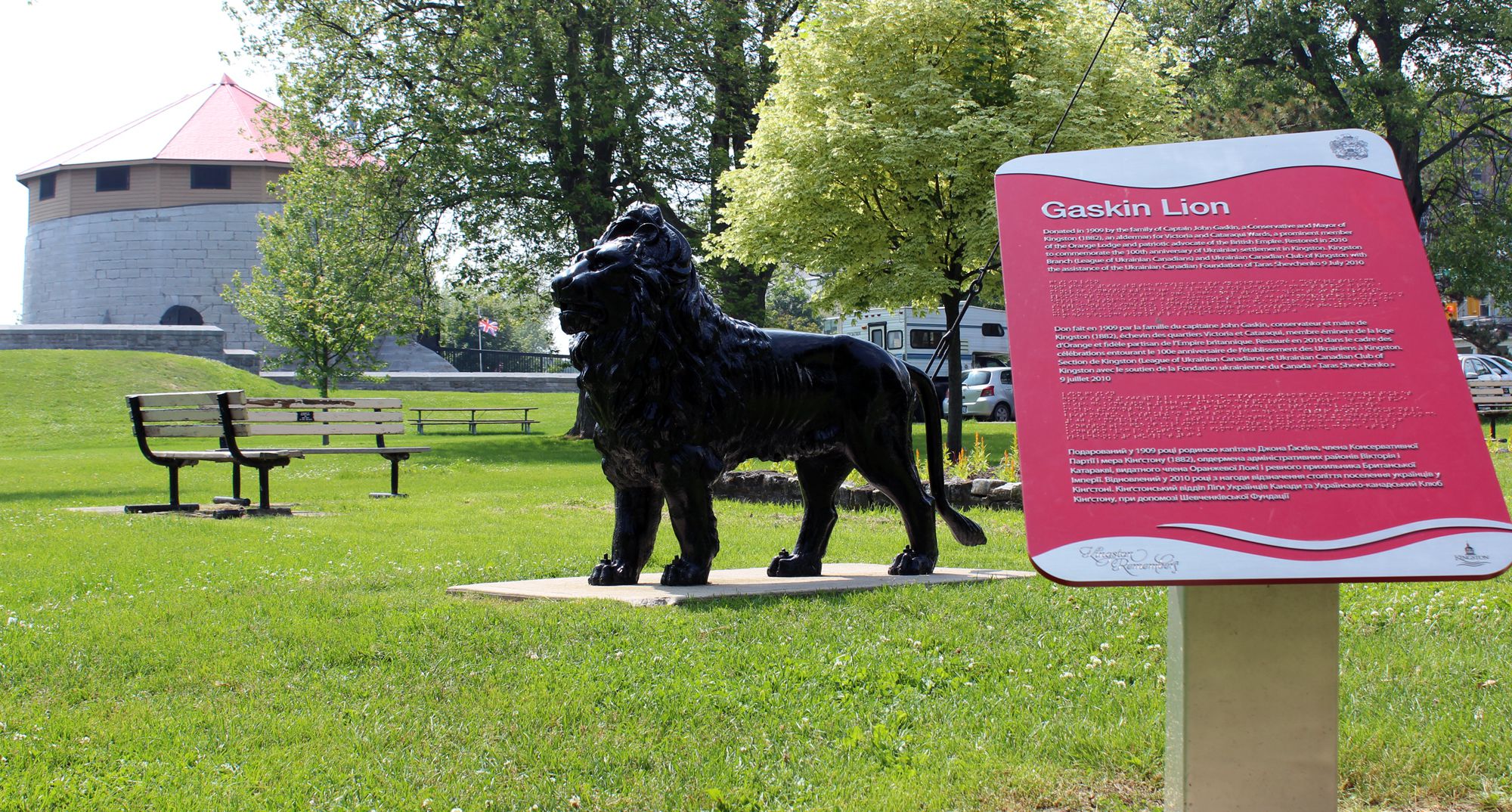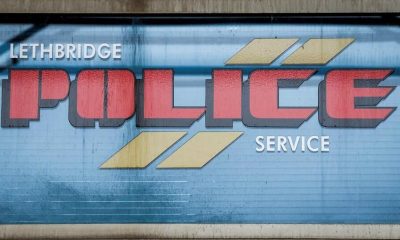The Gaskin Lion, build to commemorate John Gaskin who advocated to create Macdonald Park in 1891, boasts a historical and cultural City of Kingston plague on Sunday June 21, 2015. Steph Crosier/Kingston Whig-Standard/Postmedia Network
It’s a good thing that not all art resides indoors, otherwise art lovers would really be in for it right now. Even if you have art decorating your home, it’s probably getting a little stale at this point – so what a wonderful thing it is that we can get outside and also enjoy some safe art viewing.
It’s true. Many of us are probably guilty of assuming that art is principally enjoyed indoors when viewed on the walls of galleries (public and commercial), businesses and institutions, and/or in peoples’ homes. While this is probably true a large percentage of the time, it is certainly possible to enjoy art in a variety of environments, and it is a welcome diversion to do so. Now – as the weather warms but before the heat of summer hits and while we are still practising social distancing – is the perfect time to discover some outdoor sculptural art.
The Kingston area has, you may be surprised to know, a good amount of outdoor, or Public Art (though not nearly enough, yet). Public Art is pretty much the norm in many European cities, so we have a lot of catching up to do, but the city is apparently working on it if the Public Art Master Plan is anything to go by. What we have so far is worth exploring, and herewith are a few suggestions.
East of Kingston on the west side of Gananoque is a little-known but captivating sculpture garden, just past the bridge if you drive in from Kingston on Highway 2 east, in Confederation Park. While much of the work dates from the late ‘60s, the 70’s, and into the ‘80s and will not appeal to everyone’s taste (which is OK), there is enough here to fill everyone’s cup of artistic enjoyment – particularly with the inclusion of work by local and regional artists. These latter works, such as Rick Lapointe’s “Pitch Pine,” celebrate the beauty and history of the local area through the unique perspective of the artist’s eye.
Within Kingston, there is an array of opportunities to view individual sculptures and sculptural groups. At Queen’s University (including the Agnes), there are at least nine outdoor sculptural works scattered across the campus. All of these are contemporary artworks, each very different from the other. You can find a map and some summary information at www.queensu.ca/planningandbudget/university-planning/outdoor-sculptures, and other internet searches will reward you with some unique interpretations of these Public Art objects.
Along Kingston’s waterfront, you can enjoy both the scenery and some large works – which you may have seen so often that you no longer notice them. It’s time to take another look, friends. The biggies are “Tetra,” at Portsmouth Olympic Harbour, “Pollution,” in MacDonald Park and “Time,” in Breakwater Park. While these may not appeal to everyone, they do have a story to tell. With respect to myth-busting, however, the two arms of “Time” are not designed to eventually touch on the basis of its materials degrading (which is an oft-told story). Rather, the two pillars may eventually touch because the sculpture is built on a fault line, which puts a completely different spin on things. On a smaller scale is the beloved Gaskin Lion in MacDonald Park, featured in many family photos. While it may look like an animal left behind from a carousel, this majestic lion is a quite detailed bronze sculpture (restored in 2010), a media that requires some skill to achieve a good result.
In the core of downtown Kingston, you have to look a little harder to spy out some of our outdoor sculpture. An easy one is the Brock Street Art Project, with works by local sculptor Stefan Duerst. As for the others, I’ll give you a hint – look up! There is another work by Duerst on the exterior of Studio 22 on Market Square, but there are works by other artists scattered around on various buildings and in alleyways, many of which add an aspect of whimsey to their environment. If you want a little help in your sculpture scavenger hunt, check out the website of Martello Alley artist collective and watch the videos created by proprietor David Dossett, who himself recently sought out many of the sculptures in and around Kingston: www.martelloalley.com/pages/walk-about-kingston-with-martello-alley.
If bronzes are your thing, across the LaSalle Causeway on the campus of Royal Military College you will find at least two – the life-size bronze of a cadet, fondly known as “Brucie,” and a bronze and cast stone sculpture titled “To Overcome,” which has some resonance in present circumstances. There are also bronzes in City Park, including (yes) the large Sir John A. Macdonald memorial, and the 21st Battalion War Memorial. Memorials have an interesting place in sculptural art history – much too involved to get into here – because so much Public Art is memorial in nature. For example, Celtic Crosses (at least four in Kingston) are highly decorative memorial works but have a poignancy and depth of cultural history that goes far beyond their surface appearance.
This is just an overview of outdoor sculptural works that it’s possible to view in these days of social distancing. It’s the perfect time to get out there and explore them. Stay well, everyone!
And kudos to those folks who spotted the error in one of the image captions for my last column. The figure in the Ravenna mosaics is, of course, the Empress Theodora (not Isabella). The fault was mine – I can’t imagine where my mind was at the time.
Kamille Parkinson earned a PhD in art history from Queen’s University and is currently a freelance writer and art historian at large. You can find her writing at Word Painter Projects on Facebook, and can contact her at artabouttownygk@gmail.com.























